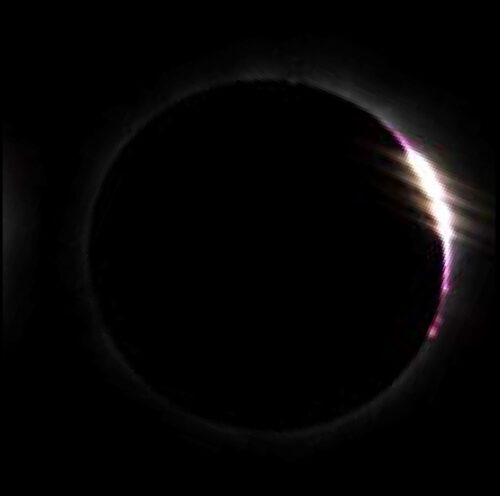
Baily’s beads
Seen about 10-15 seconds before and after totality, Baily’s beads are little bead-like blobs of light at the edge of the Moon. These happen because the gaps in the mountains and valleys on the Moon’s surface allow sunlight to pass through in some places but not others.
Diamond ring
As the Moon moves to cover the entire disc of the Sun, Baily’s beads disappear, leaving one last bead a few seconds before totality. At this point in the eclipse, the Sun’s corona forms a ring around the Moon. The ring around the Moon and the leftover Baily’s bead gives the appearance of a diamond ring.
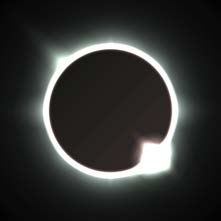
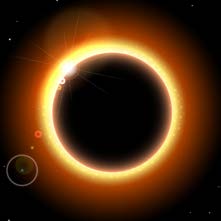
The Sun’s chromosphere
The Sun’s atmosphere has 3 layers: the photosphere, the chromosphere and the corona. The chromosphere, which gives out a reddish glow can only be seen for a few seconds right after the diamond ring disappears during a total eclipse of the Sun.
The Sun’s corona
Like the chromosphere, the Sun’s corona is only visible during a Total Solar Eclipse. It can be seen as a faint ring of rays surrounding the dark Moon during totality.

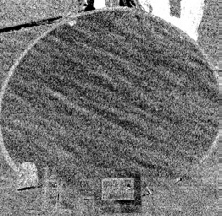
Shadow bands
About one minute before and after totality, moving wavy lines of alternating light and dark can be seen on plain-colored surfaces. These shadow bands are the result of the light emitted from a thin solar crescent being refracted by the Earth’s atmosphere.
Where the Eclipse Was Best Viewed
For the most dramatic experience of the coming Total Solar Eclipse, you’ll need to be in the path of totality.
Although many of the areas covered by the path of totality are privately-held, many parks span the path and are open for visits, although you can expect that parking may be a serious problem!
The Monday, April 8, 2024, total solar eclipse will cross North America, passing over Mexico, the United States, and Canada. The total solar eclipse will begin over the South Pacific Ocean. Weather permitting, the first location in continental North America that will experience totality is Mexico’s Pacific coast at around 11:07 a.m. PDT.
The path of the eclipse continues from Mexico, entering the United States in Texas, and traveling through Oklahoma, Arkansas, Missouri, Illinois, Kentucky, Indiana, Ohio, Pennsylvania, New York, Vermont, New Hampshire, and Maine. The eclipse will enter Canada in Southern Ontario, and continue through Quebec, New Brunswick, Prince Edward Island, and Cape Breton. The eclipse will exit continental North America on the Atlantic coast of Newfoundland, Canada, at 5:16 p.m. NDT.
This table provides the time that totality begins in a city in each US state in the path of totality. These areas will also experience a partial eclipse before and after these times.
| Location | Partial Begins | Totality Begins | Maximum | Totality Ends | Partial Ends |
|---|---|---|---|---|---|
| Dallas, Texas | 12:23 p.m. CDT | 1:40 p.m. CDT | 1:42 p.m. CDT | 1:44 p.m. CDT | 3:02 p.m. CDT |
| Idabel, Oklahoma | 12:28 p.m. CDT | 1:45 p.m. CDT | 1:47 p.m. MDT | 10:49 p.m. MDT | 3:06 p.m. CDT |
| Little Rock, Arkansas | 12:33 p.m. CDT | 1:51 p.m. CDT | 1:52 p.m. CDT | 1:54 p.m. CDT | 3:11 p.m. CDT |
| Poplar Bluff, Missouri | 12:39 p.m. CDT | 1:56 p.m. CDT | 1:56 p.m. CDT | 2:00 p.m. CDT | 3:15 p.m. CDT |
| Paducah, Kentucky | 12:42 p.m. CDT | 2:00 p.m. CDT | 2:01 p.m. CDT | 2:02 p.m. CDT | 3:18 p.m. CDT |
| Evansville, Indiana | 12:45 p.m. CDT | 2:02 p.m. CDT | 2:04 p.m. CDT | 2:05 p.m. CDT | 3:20 p.m. CDT |
| Cleveland, Ohio | 1:59 p.m. EDT | 3:13 p.m. EDT | 3:15 p.m. EDT | 3:17 p.m. EDT | 4:29 p.m. EDT |
| Erie, Pennsylvania | 2:02 p.m. EDT | 3:16 p.m. EDT | 3:18 p.m. EDT | 3:20 p.m. EDT | 4:30 p.m. EDT |
| Buffalo, New York | 2:04 p.m. EDT | 3:18 p.m. EDT | 3:20 p.m. EDT | 3:22 p.m. EDT | 4:32 p.m. EDT |
| Burlington, Vermont | 2:14 p.m. EDT | 3:26 p.m. EDT | 3:27 p.m. EDT | 3:29 p.m. EDT | 4:37 p.m. EDT |
| Lancaster, New Hampshire | 2:16 p.m. EDT | 3:27 p.m. EDT | 3:29 p.m. EDT | 3:30 p.m. EDT | 4:38 p.m. EDT |
| Caribou, Maine | 2:22 p.m. EDT | 3:32 p.m. EDT | 3:33 p.m. EDT | 3:34 p.m. EDT | 4:40 p.m. EDT |
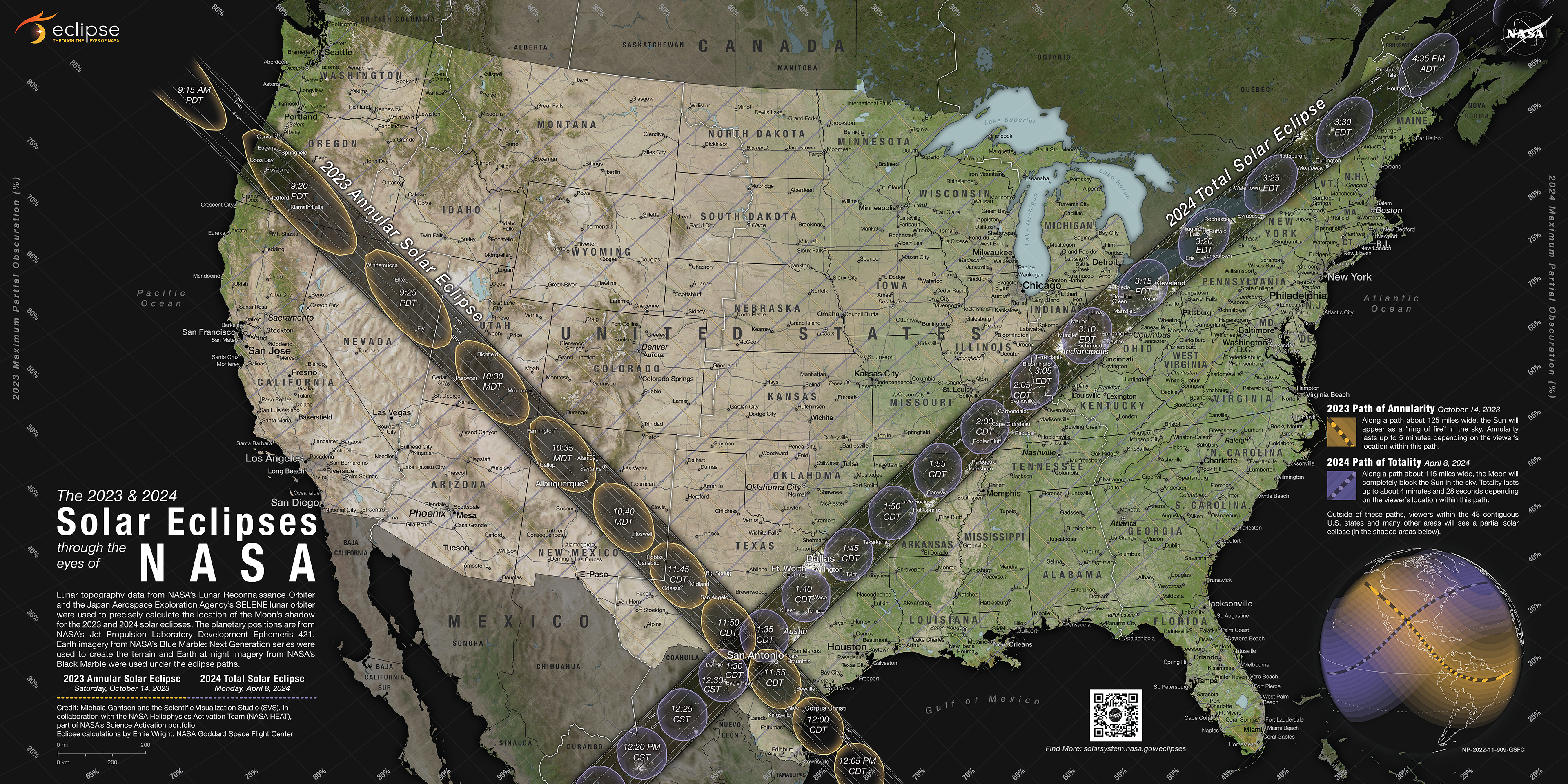
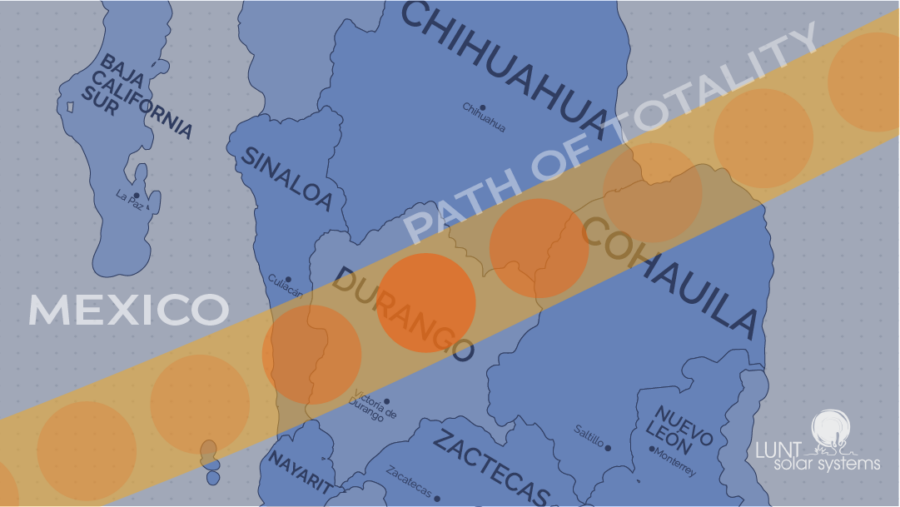
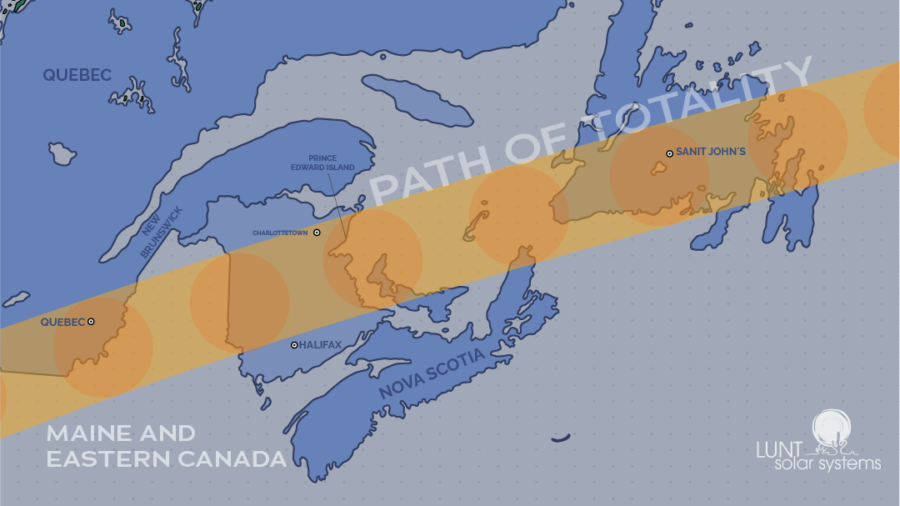
Interactive Map
View an interactive map of the 2024 Total Solar Eclipse path here.
Check Back Soon
We’ll be adding information here over the next few months, so bookmark this page and refer to it as you make your Solar Eclipse plans!